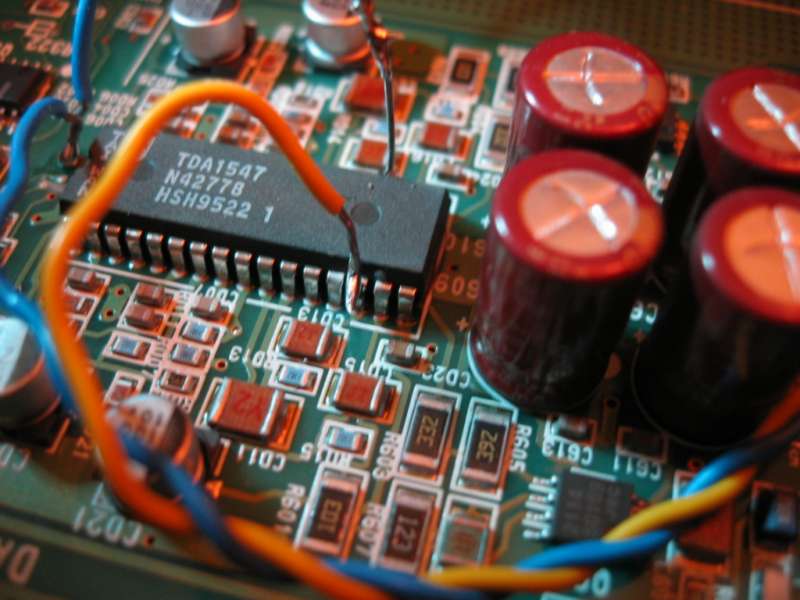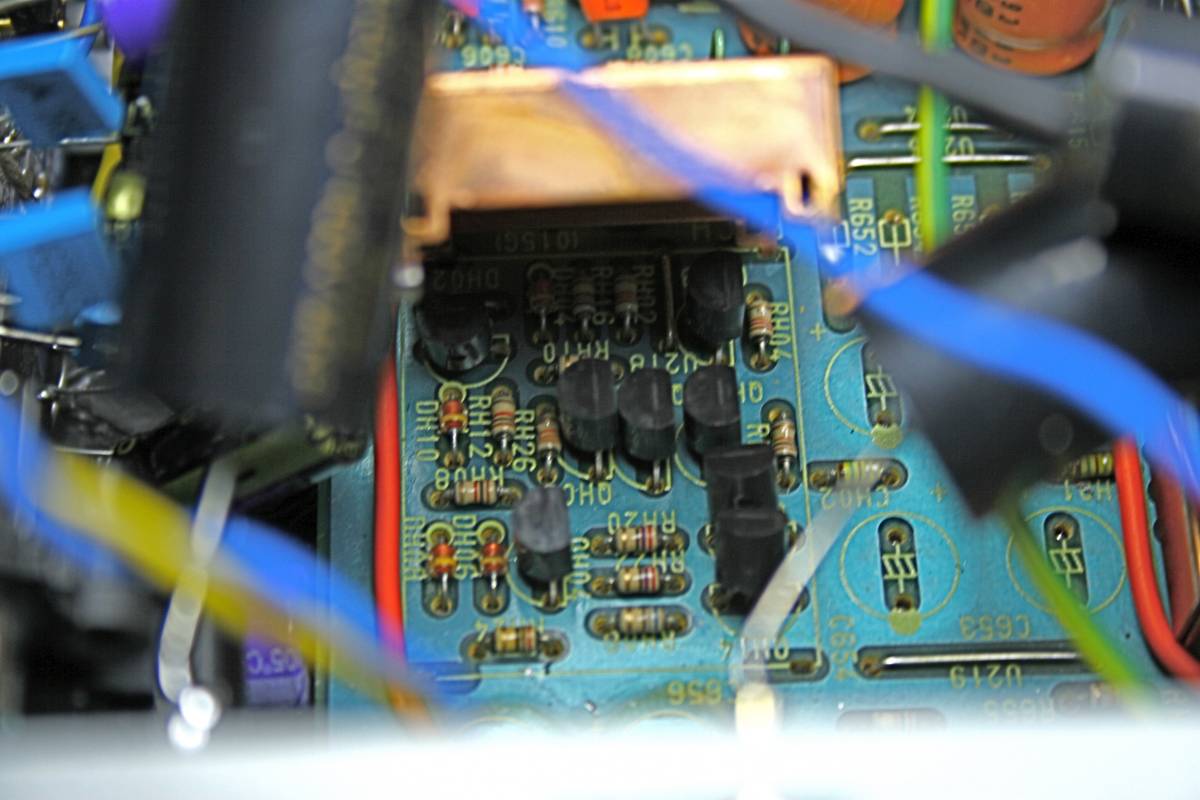MARANTZ
CD-17
SUMMER 2006

This player has
an almost legendary status, by some people
regarded as one of the best.
It impressed me
with fascia design - very
clean one
and with few
buttons. So far so good.

Inside it has
nothing special really. An OK player. There is nothing
high-endish about it. Normal power supply, rather flimsy CDM12
mechanism, very slow and again flimsy drawer. PCBs are neatly
laid out, simple, SMD, cleanly designed, etc. The DAC is a Philips
TDA1547 - sonically - a far far cousin of 1541A but VERY convenient for
tuning. Lampization is a pleasure - it is perhaps the easiest chip to
work with or so I thought back then in 2006. . It has built in I/U
converter in a form of a cheap op-amp so U can have voltage signal
directly feeding the lampizator.
So far so good.

SURPRISE SURPRISE
This player's
lampization process brought the smallest difference in my
experience. It was that good in stock form. Perhaps inside the copper
cans they put a discrete output stage instead of the op-amps. Maybe
even fet stage. It is easy to hear the lack of op-amps in the path.
2 years later - I looked inside the can. There is simple transistor
stage indeed.

So
the HDAM is an amplification stage consisting of 8 discrete
transistors and 11 resistors and 4 diodes.
Very nice of Marantz to use discrete components not op-amps, hats off
to them, but calling it a revolutionary proprietary high definition
stage - is a BIT OF OVERSTATEMENT. Too much marketing BS for my taste.
Such output stage was an order of the day back in the times before
opamps. Every kid in 1970 could do a stage like this on their first
semester of electronics. So I do not consider it such a big deal.
Ken Ishivata "invented " transistors in the same way I "invented "
tubes.
I should patent SNIPIT and cover NOTHING - (air) - in the golden can
and call it Higfh Transparency Output Stage - HTOS.
Of course
inevitably after lampization all aspects were improved, but the
difference was apparent
only to the trained ear and not immediately.
Bass got more
colourful, with more details, trebles opened up a notch, scene became
more 3-d, vocals more natural, and so on.

I would
recommend this player not for lampization, but quite simply to anyone
looking for a simple but
overall very
good player in a stock form for circa 250 Euro on ebay. Or a transport
perhaps.
BUT
Make no mistake
about it - the DAC chip with voltage out is among the worst that I
tested. Even Technics MASH or Panasonic or any burr brown beats it. The
Philips own predecessor TDA1541A beats it like hell. In my book -
Marantz 40 is a better player.
In the
end, the owner preferred the lampized DACMAGIC 2 from cambridge,
with cheap but sweet DAC Philips TDA-1305. Also voltage but so analog
like !
Now having
criticized it so badly (perhaps because I am so pissed off
to have spent 1500 Euro for my dream of all players - Revox Exception
E426 player (which shares with the Marantz 17 the same PCB and DAC) and
I hated the sound and I sold it at loss with biig disappointment.) I
know you can make the TDA1547 sing but it requires quite drastic mods.
Study the PDF of this dac chip and find UN-USED legs which have current
output (!!!) (remember - current = kosher, voltage = easy but no good).
Then somehow get rid of the internal oP-AMP.
here is my untested theoretical
conversion recipe (MAY
2008) = TDA1547 U to I output.
Our usable
current signal will come from negative side of ballanced because the
lampizator reverses phase hence two negatives will become positive.
The signal willl be : legs 10 (R) and 23 (L). Both must be free
floating (not connected to anything except perhaps a centimetre of
trace.
From legs 10 and 23 we go to tube grid (leg 7 lampizator) without any
capacitor. The lampizator must have a grid grounding resistor in a form
of I/U converter. We choose R=100 Ohms from leg 7 lampizator to ground.
To make the sound come out from the un-used current legs we must
disable the internal op-amp.
Legs 12 and 21 must be isolated and free floating (op-amp ground of
positive inputs) and also legs 16 and 17 must be free (op-amp power
supply).
This kind of dac with I/U conversion by resistor sings best with strong
amplification tubes. I suggest 6SL7, 12SL7, e88cc, ecc88, 6922,
6dj8 or at least ecc81, or 6H1P. Not 6H6P for sure. 6H2P is excellent
strong tube.
2 YEARS LATER
I decided that this is a good plan and I applied it to TEAC VRDS D10
which uses same chips (but in Mono mode) . Despite wasting a whole
weekend - nothing seems to work. I get noises, distortions, even
echoes.
I decided to curse this DAC. At least I know why Philips lost
everything they once had in Audio world. From TDA1541 to 1547 is like a
journey from heaven to hell. Brooklyn heights to
Newark. Wroclaw to Szczecin. Andalusia to Ibiza. Amsterdam to Bruxelles.
I decided to give up and never return to the subject. Count me out.
BACK



